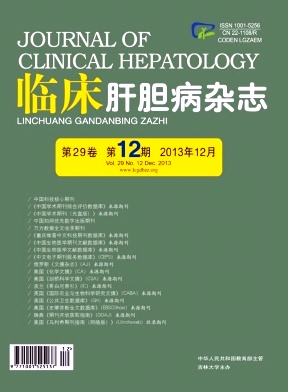|
[1]BEARMAN SI.The syndrome of hepatic veno-occlusive disease after marrow transplantation[J].Blood, 1995, 85 (11) :3005-3020.
|
|
[2]DeLEVE LD, VALLA DC, GARCIA-TSAO G.Vascular disorders of the liver[J].Hepatology, 2009, 49 (5) :1729-1764.
|
|
[3]SONG Y, FAN YH.Clinical features of hepatic veno-occlusive disease induced by gynura root:analysis of 102 cases[J].J Clin Hepatol, 2011, 27 (5) :496-499. (in Chinese) 宋宇, 樊艳华.土三七所致肝小静脉闭塞病102例临床分析[J].临床肝胆病杂志, 2011, 27 (5) :496-499.
|
|
[4]YAMADA N, URAHASHI T, IHARA Y, et al.Veno-occlusive disease/sinusoidal obstruction syndrome associated with potential antibody-mediated rejection after pediatric living donor liver transplantation:a case report[J].Transplant Proc, 2012, 44 (3) :810-813.
|
|
[5]RUBBIA-BRANDT L, AUDARD V, SARTORETTI P, et al.Severe hepatic sinusoidal obstruction associated with oxaliplatinbased chemotherapy in patients with metastatic colorectal cancer[J].Ann oncol, 2004, 15 (3) :460-466.
|
|
[6]SARTORI MT, CESARO S, PERUZZO M, et al.Contribution of fibrinolytic tests to the differential diagnosis of veno-occlusive disease complicating pediatric hematopoietic stem cell transplantation[J].Pediatr Blood Cancer, 2012, 58 (5) :791-797.
|
|
[7]LIN G, WANG JY, LI N, et al.Hepatic sinusoidal obstruction syndrome associated with consumption of Gynura segetum[J].J Hepatol, 2011, 54 (4) :666-673.
|
|
[8]GAO H, LI N, WANG JY, et al.Definitive diagnosis of hepatic sinusoidal obstruction syndrome induced by pyrrolizidine alkaloids[J].J Dig Dis, 2012, 13 (1) :33-39.
|
|
[9]van den BROEK MA, VREULS CP, WINSTANLEY A, et al.Hyaluronic Acid as a marker of hepatic sinusoidal obstruction syndrome secondary to oxaliplatin-basedchemotherapy in patients with colorectal liver metastases[J].Ann Surg Oncol, 2013, 20 (5) :1462-1469.
|
|
[10]RAHBARI NN, WEITZ J.Hyaluronic acid as a marker of sinusoidal obstruction syndrome after oxaliplatin-based chemotherapy for colorectal liver metastases:don't forget the tumor[J].Ann Surg Oncol, 2013, 20 (5) :1405-1407.
|
|
[11]CHEN IL, YANG SN, HSIAO CC.Treatment with high dose methylprednisolone for hepatic veno-occlusive disease in a child with rhabdomyosarcoma[J].Pediatr Neonatol, 2008, 49 (4) :141-144.
|
|
[12]MYERS KC, LAWRENCE J, MARSH RA, et al.High-dose methylprednisolone for veno-occlusive disease of the liver in pediatric hematopoietic stem cell transplantation recipients[J].Biol Blood Marrow Transplant, 2013, 19 (3) :500-503.
|
|
[13]CORBACIOGLU S, CESARO S, FARACI M, et al.Defibrotide for prophylaxis of hepatic veno-occlusive disease in paediatric haemopoietic stem-cell transplantation:an open-label, Phase 3, randomised controlled trial[J].Lancet, 2012, 379 (9823) :1301-1309.
|
|
[14]CORBACIOGLU S, KERNAN N, LEHMANN L, et al.Defibrotide for the treatment of hepatic veno-occlusive disease in children after hematopoietic stem cell transplantation[J].Expert Rev Hematol, 2012, 5 (3) :291-302.
|
|
[15]HAO WG, DUAN LP, ZHANG HR, et al.Orthotopic liver transplantation treats hepatic vein occlusion disease:a case report[J].J Clin Hepatol, 2011, 27 (2) :205. (in Chinese) 郝卫刚, 段丽平, 张海蓉, 等.原位肝移植治疗肝小静脉闭塞病1例[J].临床肝胆病杂志, 2011, 27 (2) :205.
|







 DownLoad:
DownLoad: